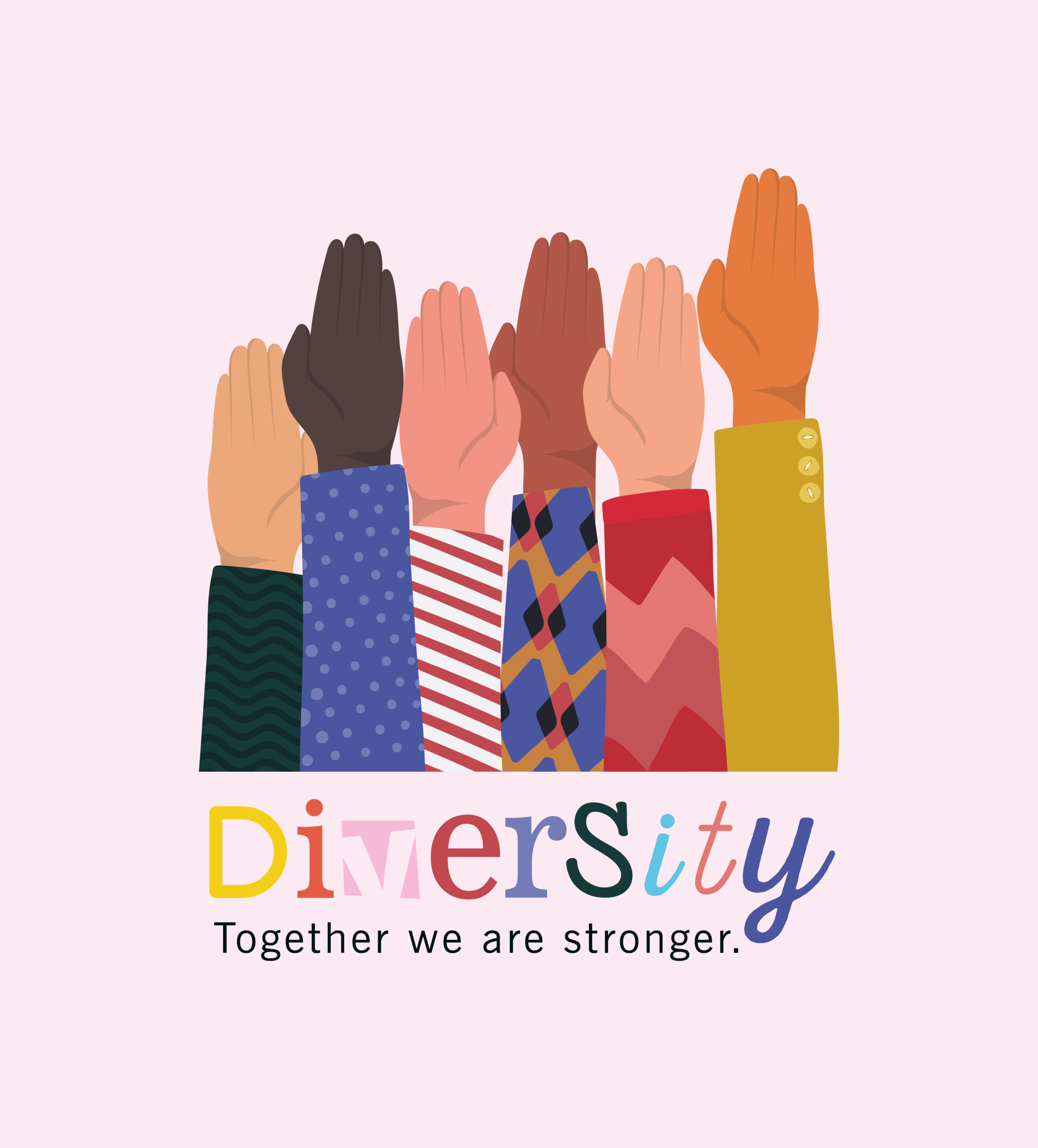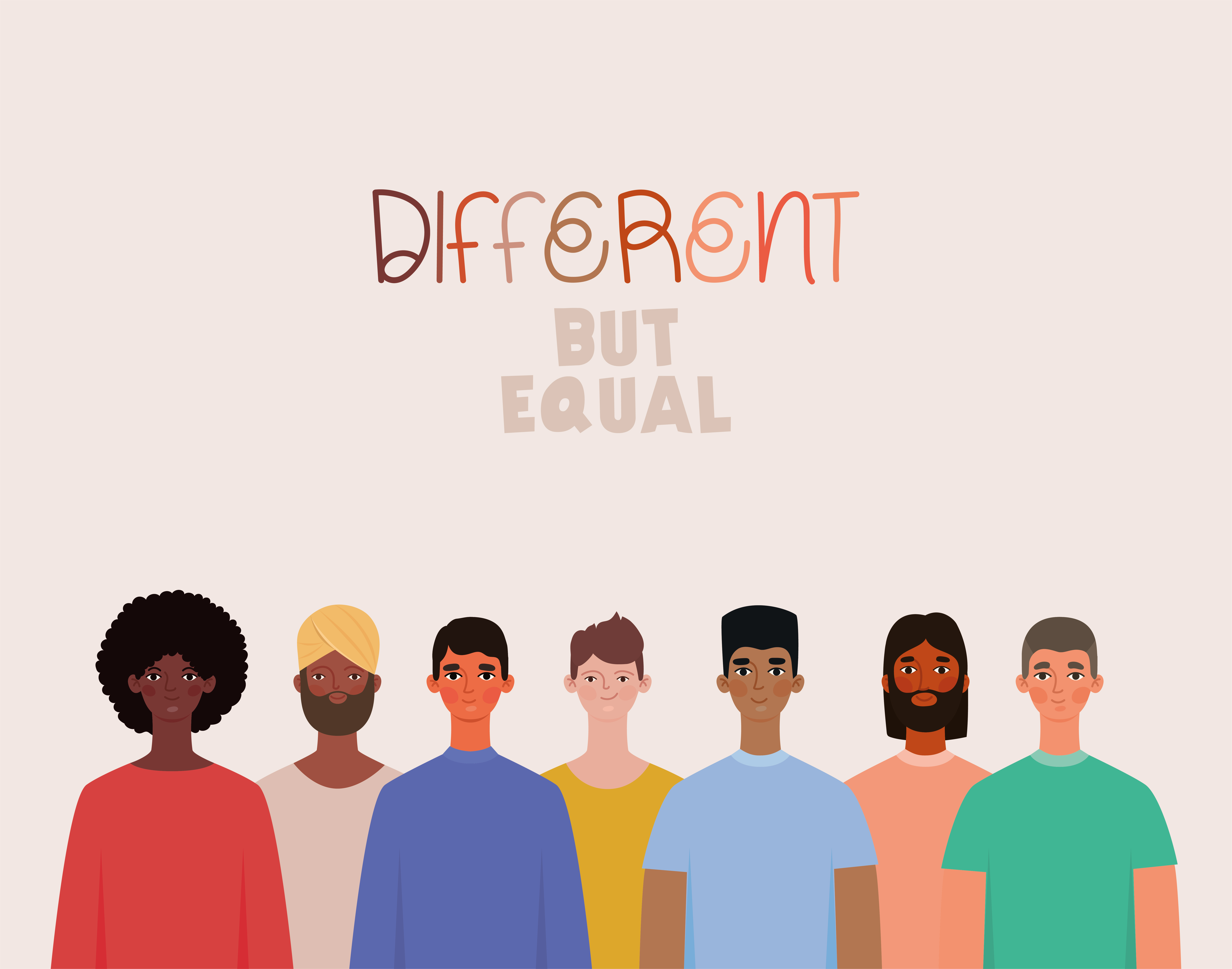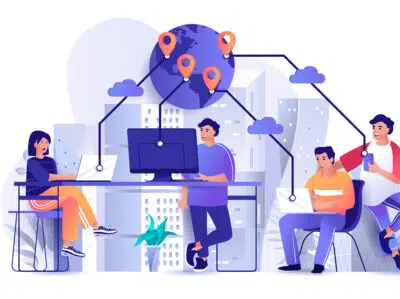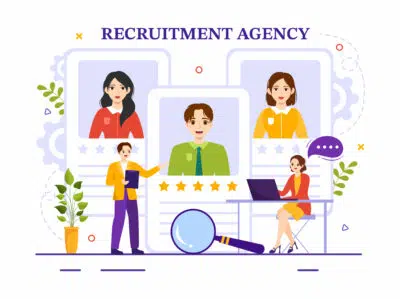Diversity recruitment — a recruiter’s handbook of dos and don’ts

Your employee brand must have a diversity and inclusion strategy. Here’s why!
March 9, 2023
Women in STEM: Empowering Young Women for the Future
March 13, 2023
Introduction
The workforce has seen a significant transformation over the past century, moving from being predominantly male-dominated to having women enter the workforce to the current situation, where marginalised groups are making their imprint.
The transformation was fraught with challenges; discrimination, unjust treatment and unequal opportunities were rampant. This prompted the development of new workplace policies and regulations that would be equitable for everyone. Since then, the subject of diversity, inclusion and equity (DEI) at the workplace has created much buzz.
DEI has become critical to the success of a business, especially in the current globalised, interconnected world.

Benefits of a diverse workforce
An interconnected and globalised world offers an ideal environment for the diverse range of skills that people from varied backgrounds bring. Listed below are the leading advantages of workplace diversity:
- Increased productivity: A diverse workplace sparks innovation and creativity. It brings together unique talents, experiences and ideas, resulting in higher productivity.
- Creative problem solving: A multicultural workplace fosters creativity and problem-solving. Diverse perspectives and solutions from people with different backgrounds increase the likelihood of finding effective solutions to workplace problems.
- Enhanced reputation: A diverse workplace enhances a company’s reputation as a preferred employer. Prospective employees look for employers who value and respect all backgrounds and treat their staff equitably.
- Expanded marketing opportunities: A diverse workplace attracts customers and job applicants. By featuring mature-aged, differently-abled or ethnically diverse people in advertisements, a company can enhance its reputation, increase visibility in the market and expand its client base.
Given the numerous advantages of a diverse workforce, it is time to consider whether factors such as colour, culture, gender, sexual orientation, disability, age, religion, socioeconomic status, education or geography should be used as grounds for discrimination against qualified candidates.
Companies that prioritise DEI not only foster a more welcoming and inclusive work environment but also tend to perform better financially.
However, achieving a diverse workforce requires a concerted effort from all stakeholders, especially recruiters. They are responsible for attracting and hiring new talent.
Whether a seasoned recruiter looking to expand your skillset or a beginner seeking to create a more diverse and inclusive workplace, you are bound to encounter challenges in the diversity hiring process. You will need a guide that will equip you with the tools and knowledge one needs to succeed. So let’s get started!
Preparation is key
It is unwise to dive into DEI hiring blindfolded. Planning and preparation should be taken seriously.
- Questions, questions, questions
A survey of the backgrounds and experiences of the current workforce is an excellent place to start. The survey should answer these major questions: What is the current strength of workforce diversity? What types of backgrounds do they come from? What does the workplace need to make diverse candidates feel included? Infrastructure improvement, inclusiveness training programmes?
Identifying the answers to these questions is imperative to setting targets for increasing the diversity of the workforce and implementing strategies to achieve them.
- Reviewing your job advertising language
Do your job postings reflect the intended inclusiveness? If not, consider rephrasing them.
Filter out words and phrases such as the following:
- HIS/HER, SALESMAN — these words indicate gender bias. Replace them with THEIR and SALES REPRESENTATIVE.
- FRESH, SEASONED — they set an age bar.
- If your job advertisement specifically states that you are looking for ABLE-BODIED people, then you have indicated that persons with disabilities are not welcome to apply for the post.
There are more such examples. The key is to watch your words.
- Build your candidate pool
It is good to begin with a large pool of diverse candidates. This is to ensure that by the time you reach the end of your assessment process, you will be able to achieve the diversity employment target you have set.
However, building a diverse candidate pool requires a more targeted effort. Here are a few options:
- Reach out to marginalised communities. Make an active effort to find talent from underrepresented groups. You could search social media sites and change your search keywords in job boards. Send individual outreach communications to prospects outlining why you believe they’d be the perfect fit for your business.
- Use blind resumes in your shortlisting process. The idea is to exclude personal details such as name, gender, age, ethnicity, etc. that are irrelevant to the candidate’s capabilities.
- Employee referrals are an effective way to build a diverse candidate pool. Employees from diverse backgrounds are sure to be connected to a network of people with varied backgrounds. An added advantage is that these employees will double up as brand ambassadors.
- Making your brand’s DEI friendliness known is an excellent idea. This means sharing information about your company’s diverse workforce or spreading the word about safety at the workplace. This is sure to catch the eye of atypical job seekers.
- Walk the talk of a diversity-friendly workplace
Upgrade the infrastructure in your workplace to support your diversity recruitment strategy. This means having:
- Gender-neutral washrooms
- Accessible restrooms, ramps and parking places for the physically-challenged
- Tactile indicators and braille fonts in correspondence for the visually impaired
- Closed captioning in meetings and videos for the benefit of employees with auditory disabilities
These are just a few examples. Let your requirements be the driving force; do not hesitate to unleash your creativity.
- Revise HR policies
Hiring people from diverse backgrounds is not fruitful if you don’t make concerted efforts to retain them. It is a well-known fact that happy employees tend to stay longer. And HR policies are significant determinants of the happiness quotient. For your diverse staff to feel comfortable, you could revise some of your policies. Here are some examples:
- Employ inclusive language in all communication.
- Include major community festivals in the holiday calendar. If this is a stretch, at least acknowledge them. Remember to mark Diwali, Ramadan, Thanksgiving and Rosh Hashanah in your DEI-friendly holiday calendar.
- Word your leave policy carefully. For example, to demonstrate the inclusiveness of the LGBTQIA+ community, use PARENTAL LEAVE instead of MATERNITY LEAVE.
- Make diversity and inclusion training mandatory for all staff.
- Strictly enforce a non-discrimination policy.
To engage a diverse workforce, equity and inclusion must coexist.
- Unconscious bias is an enemy
Did you form an opinion about a candidate based on first impressions? Do you favour some candidates because they fit “your type”? You may not think so; nevertheless, science says otherwise.
While we would all like to think that reason and logic drive our choices, science shows that unconscious brain activity enters the picture early and influences our opinions. Of course, this occurs without our knowledge.
In the employment process, stereotyping starts at the resume screening stage. How closely an applicant matches your picture of an ideal candidate determines whether the candidate gets accepted or rejected.
The bias continues into the interviewing phase. Even seasoned interview panellists are not immune to becoming judgemental.
Luckily, training courses that enable recruiters to engage in more inclusive sourcing, recruiting and evaluation practices are available.
DEI hiring must be approached with the utmost alertness.
Common mistakes to avoid
- Overlooking skills for qualifications
Considering the rising trend of skills-based hiring, placing too much emphasis on qualifications could be a mistake. If an applicant has the requisite abilities for a job, it is prudent to forego the expectation of exemplary academic credentials.
Employers who place too much emphasis on academic qualifications risk losing highly qualified and brilliant people who have not pursued higher education. This can result in a loss of talent and diversity in the workplace.
- Rigid interview schedules
When scheduling for interviews, it is essential to be empathetic towards candidates’ schedules and responsibilities that may affect their availability. It would be good to consider the potential impact of your scheduling decisions on their existing employment or caregiving responsibilities.
This is especially true for members of marginalised populations who may be juggling multiple jobs, caring for family members or facing other barriers to employment.
To ensure that you are not inadvertently excluding qualified candidates, it is essential to offer flexible interview schedules. For example, insisting that all interviews be conducted during regular business hours may prove to be a pain point for candidates who are currently employed. Be open to offering evening or weekend interview slots or allowing candidates to request specific times that work for them.
By being open and accommodating to a range of scheduling needs, you can help ensure that all qualified candidates have an equal opportunity to interview for the position and that they are not forced to choose between existing responsibilities and potential employment with your organisation.
Overall, by prioritising flexibility and accommodating a range of scheduling needs, you can help ensure that you are attracting and considering the most suitable candidates for your workforce.
Conclusion
Diversity hiring is a critical step towards building an inclusive and innovative workplace. By actively seeking out candidates from different backgrounds, recruiters can help their organisations foster a culture of diversity, equity and inclusion.
To implement an effective diversity hiring strategy, recruiters should start by identifying areas where their organisation lacks representation, establishing partnerships with diverse communities, reviewing job postings to ensure inclusive language and training their interviewers on how to conduct unbiased interviews.
Ultimately, diversity in hiring is not just a moral imperative but a business and societal one too. Companies that embrace diversity and create an inclusive environment are more likely to attract top talent, boost innovation and grow their businesses.



